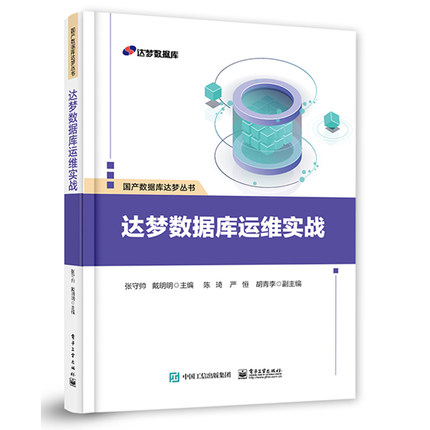Python 基础语法
Python 语言与 Perl,C 和 Java 等语言有许多相似之处。但是,也存在一些差异。
在本章中我们将来学习 Python 的基础语法,让你快速学会 Python 编程。
第一个 Python 程序
交互式编程
交互式编程不需要创建脚本文件,是通过 Python 解释器的交互模式进来编写代码。
linux上你只需要在命令行中输入 Python 命令即可启动交互式编程,提示窗口如下:
[root@localhost test]# python
Python 2.6.6 (r266:84292, Oct 15 2013, 07:32:41)
[GCC 4.4.7 20120313 (Red Hat 4.4.7-4)] on linux2
Type "help", "copyright", "credits" or "license" for more information.
>>> C:/Windows/system32>python
Python 3.6.1 (v3.6.1:69c0db5, Mar 21 2017, 18:41:36) [MSC v.1900 64 bit (AMD64)] on win32
Type "help", "copyright", "credits" or "license" for more information.
>>>>>> print "Hello, Python!"Hello, Python!通过脚本参数调用解释器开始执行脚本,直到脚本执行完毕。当脚本执行完成后,解释器不再有效。
让我们写一个简单的 Python 脚本程序。所有 Python 文件将以 .py 为扩展名。将以下的源代码拷贝至 test.py 文件中。
print "Hello, Python!"[root@localhost test]# python test.pyHello, Python!#!/usr/bin/python
print "Hello, Python!"$ chmod +x test.py # 脚本文件添加可执行权限
$ ./test.py
输出结果:
Hello, Python!在 Python 里,标识符有字母、数字、下划线组成。
在 Python 中,所有标识符可以包括英文、数字以及下划线(_),但不能以数字开头。
Python 中的标识符是区分大小写的。
以下划线开头的标识符是有特殊意义的。以单下划线开头 _foo 的代表不能直接访问的类属性,需通过类提供的接口进行访问,
不能用 from xxx import * 而导入;
以双下划线开头的 __foo 代表类的私有成员;以双下划线开头和结尾的 __foo__ 代表 Python 里特殊方法专用的标识,
如 __init__() 代表类的构造函数。
Python 可以同一行显示多条语句,方法是用分号 ; 分开,如:
>>> print 'hello';print 'runoob';
hello
runoob下面的列表显示了在Python中的保留字。这些保留字不能用作常数或变数,或任何其他标识符名称。
所有 Python 的关键字只包含小写字母。
| and |
exec |
not |
| assert |
finally |
or |
| break |
for |
pass |
| class |
from |
print |
| continue |
global |
raise |
| def | if |
return |
| del | import | try |
| elif | in | while |
| else | is | with |
| excep | lambda | yield |
学习 Python 与其他语言最大的区别就是,Python 的代码块不使用大括号 {} 来控制类,函数以及其他逻辑判断。
python 最具特色的就是用缩进来写模块。
缩进的空白数量是可变的,但是所有代码块语句必须包含相同的缩进空白数量,这个必须严格执行。如下所示:
if True:
print "True"
else:
print "False"#!/usr/bin/python
# -*- coding: UTF-8 -*-
# 文件名:test.py
if True:
print "Answer"
print "True"
else:
print "Answer"
# 没有严格缩进,在执行时会报错
print "False"[root@localhost test]# python test.py
File "test.py", line 5
if True:
^
IndentationError: unexpected indent空格没对齐的问题",所有 python 对格式要求非常严格。
如果是 IndentationError: unindent does not match any outer indentation level错误表明,你使用的缩进方式不一致,
有的是 tab 键缩进,有的是空格缩进,改为一致即可。
因此,在 Python 的代码块中必须使用相同数目的行首缩进空格数。
建议你在每个缩进层次使用 单个制表符 或 两个空格 或 四个空格 , 切记不能混用
多行语句
Python语句中一般以新行作为为语句的结束符。
但是我们可以使用斜杠( /)将一行的语句分为多行显示,如下所示:
total = item_one + /
item_two + /
item_threedays = ['Monday', 'Tuesday', 'Wednesday',
'Thursday', 'Friday']Python 可以使用引号( ' )、双引号( " )、三引号( ''' 或 """ ) 来表示字符串,引号的开始与结束必须的相同类型的。
其中三引号可以由多行组成,编写多行文本的快捷语法,常用语文档字符串,在文件的特定地点,被当做注释。
word = 'word'
sentence = "这是一个句子。"
paragraph = """这是一个段落。
包含了多个语句"""python中单行注释采用 # 开头。
#!/usr/bin/python
# -*- coding: UTF-8 -*-
# 文件名:test.py
# 第一个注释
print "Hello, Python!"; # 第二个注释
输出结果:
Hello, Python!
注释可以在语句或表达式行末:
name = "Madisetti" # 这是一个注释
python 中多行注释使用三个单引号(''')或三个双引号(""")。
#!/usr/bin/python
# -*- coding: UTF-8 -*-
# 文件名:test.py
'''
这是多行注释,使用单引号。
这是多行注释,使用单引号。
这是多行注释,使用单引号。
'''
"""
这是多行注释,使用双引号。
这是多行注释,使用双引号。
这是多行注释,使用双引号。
"""函数之间或类的方法之间用空行分隔,表示一段新的代码的开始。类和函数入口之间也用一行空行分隔,以突出函数入口的开始。
空行与代码缩进不同,空行并不是Python语法的一部分。书写时不插入空行,Python解释器运行也不会出错。
但是空行的作用在于分隔两段不同功能或含义的代码,便于日后代码的维护或重构。
记住:空行也是程序代码的一部分。
等待用户输入
下面的程序在按回车键后就会等待用户输入:
#!/usr/bin/python
raw_input("/n/nPress the enter key to exit.")
[root@localhost test]# python test.py
Press the enter key to exit.
以上代码中 ,"/n/n"在结果输出前会输出两个新的空行。一旦用户按下 enter(回车) 键退出,其它键显示。Python可以在同一行中使用多条语句,语句之间使用分号(;)分割,以下是一个简单的实例:
#!/usr/bin/python
import sys; x = 'runoob'; sys.stdout.write(x + '/n')
执行以上代码,输入结果为:
[root@localhost test]# python test.py
runoobprint 默认输出是换行的,如果要实现不换行需要在变量末尾加上逗号:
#!/usr/bin/python
# -*- coding: UTF-8 -*-
x="a"
y="b"
# 换行输出
print x
print y
print '---------'
# 不换行输出
print x,
print y,
以上实例执行结果为:
a
b
---------
a b多个语句构成代码组
缩进相同的一组语句构成一个代码块,我们称之代码组。
像if、while、def和class这样的复合语句,首行以关键字开始,以冒号( : )结束,该行之后的一行或多行代码构成代码组。
我们将首行及后面的代码组称为一个子句(clause)。
如下实例:
if expression :
suite
elif expression :
suite
else :
suite 很多程序可以执行一些操作来查看一些基本信息,Python 可以使用 -h 参数查看各参数帮助信息:
[root@localhost test]# python -h
usage: python [option] ... [-c cmd | -m mod | file | -] [arg] ...
Options and arguments (and corresponding environment variables):
-B : don't write .py[co] files on import; also PYTHONDONTWRITEBYTECODE=x
-c cmd : program passed in as string (terminates option list)
-d : debug output from parser; also PYTHONDEBUG=x
-E : ignore PYTHON* environment variables (such as PYTHONPATH)
-h : print this help message and exit (also --help)
-i : inspect interactively after running script; forces a prompt even
if stdin does not appear to be a terminal; also PYTHONINSPECT=x
-m mod : run library module as a script (terminates option list)
-O : optimize generated bytecode slightly; also PYTHONOPTIMIZE=x
-OO : remove doc-strings in addition to the -O optimizations
-R : use a pseudo-random salt to make hash() values of various types be
unpredictable between separate invocations of the interpreter, as
a defense against denial-of-service attacks
-Q arg : division options: -Qold (default), -Qwarn, -Qwarnall, -Qnew
-s : don't add user site directory to sys.path; also PYTHONNOUSERSITE
-S : don't imply 'import site' on initialization
-t : issue warnings about inconsistent tab usage (-tt: issue errors)
-u : unbuffered binary stdout and stderr; also PYTHONUNBUFFERED=x
see man page for details on internal buffering relating to '-u'
-v : verbose (trace import statements); also PYTHONVERBOSE=x
can be supplied multiple times to increase verbosity
-V : print the Python version number and exit (also --version)
-W arg : warning control; arg is action:message:category:module:lineno
-x : skip first line of source, allowing use of non-Unix forms of #!cmd
-3 : warn about Python 3.x incompatibilities that 2to3 cannot trivially fix
file : program read from script file
- : program read from stdin (default; interactive mode if a tty)
arg ...: arguments passed to program in sys.argv[1:]
Other environment variables:
PYTHONSTARTUP: file executed on interactive startup (no default)
PYTHONPATH : ':'-separated list of directories prefixed to the
default module search path. The result is sys.path.
PYTHONHOME : alternate <prefix> directory (or <prefix>:<exec_prefix>).
The default module search path uses <prefix>/pythonX.X.
PYTHONCASEOK : ignore case in 'import' statements (Windows).
PYTHONIOENCODING: Encoding[:errors] used for stdin/stdout/stderr.
PYTHONHASHSEED: if this variable is set to 'random', the effect is the same
as specifying the -R option: a random value is used to seed the hashes of
str, unicode, buffer and datetime objects. It can also be set to an
integer in the range [0,4294967295] to get hash values with a predictable
seed.



